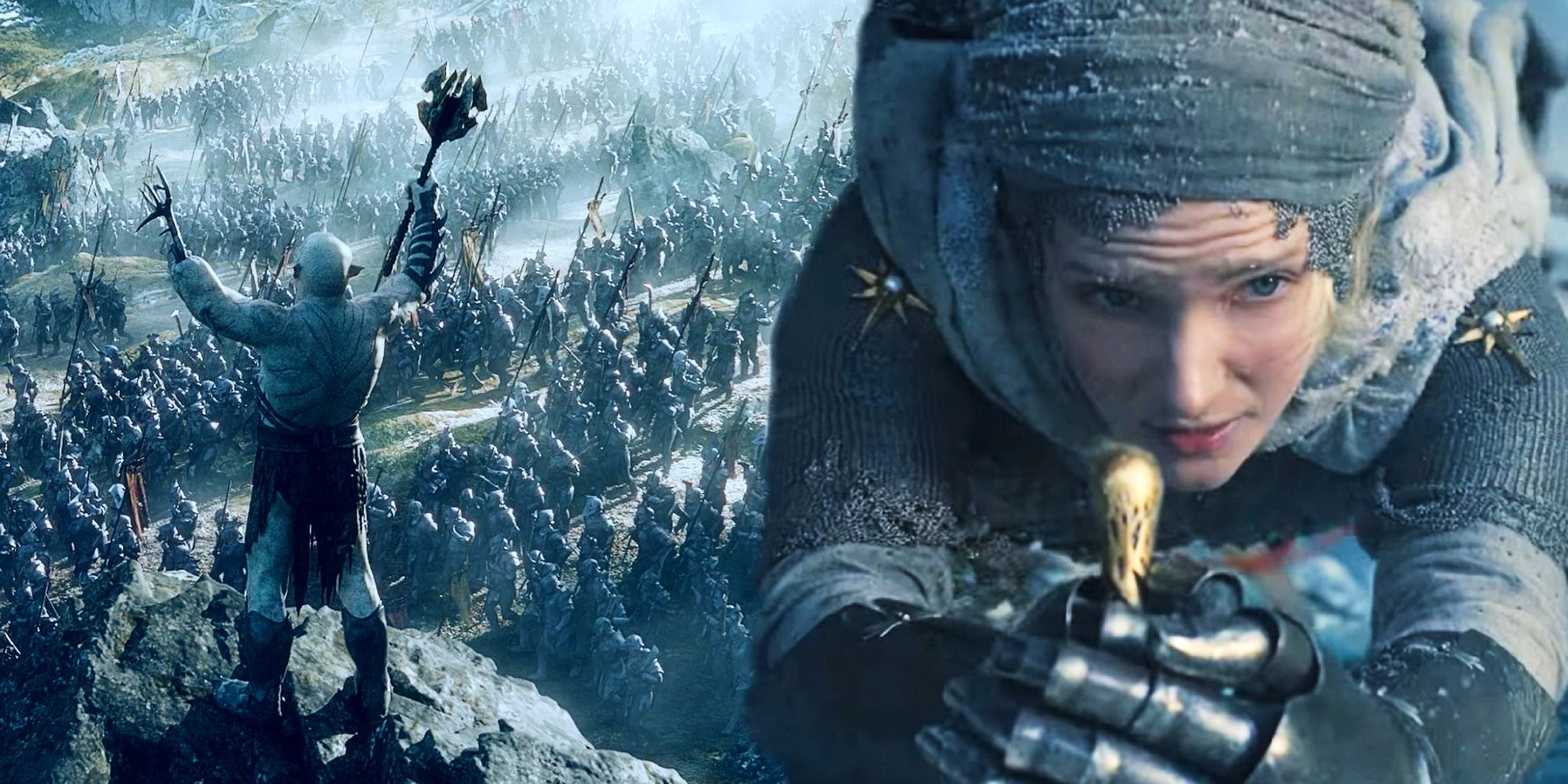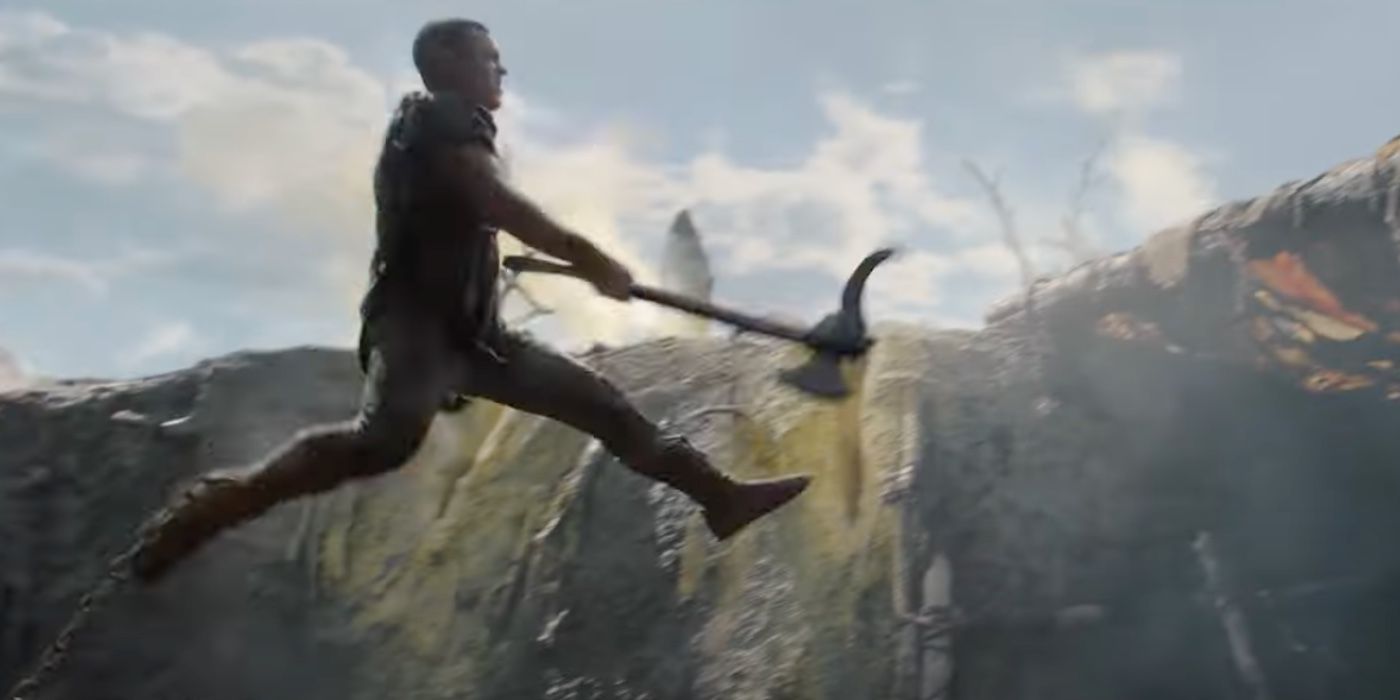Amazon's The Rings of Power needs to take great pains to avoid The Hobbit trilogy's biggest mistake. First released on February 13th, 2022, via a Super Bowl advertisement, the first teaser trailer for The Lord of the Rings: The Rings of Power showcases a stunning variety of new locales, characters, and events across Middle Earth's Second Age. Many of these shots involve the clear use of CG, with a good chunk of The Rings of Power's mammoth $462 million (per Vanity Fair) season 1 budget directly spent on digitally producing these grandiose scenes.
The Lord of the Rings: The Rings of Power teaser certainly does not lack for scope, with the Amazon original trailer introducing audiences to never-before-seen sections of Middle Earth. A young Galadriel (Morfydd Clark) is shown scaling the icy walls of Helcaraxë before charging into battle against Morgoth's forces, while several sweeping shots depict the kingdoms of Númenor, Rivendell, and Khazad-dûm, respectively. There are also quick cuts of a new type of Cave Troll attacking an Elven figure and Markella Cavenagh's Harfoot aiding a man inside a fiery maelstrom - all of which require extensive CG work to bring to life.
Yet contrary to its first CG-laden trailer, The Rings of Power needs to avoid The Hobbit trilogy's biggest mistake, which was a criminal overuse of special effects. Many of The Hobbit's big battles and climactic scenes were almost entirely built using CGI, making each of them feel hollow and weightless within the context of the story. Unnervingly, early glimpses of The Rings of Power look to be falling into this trap, with swathes of The Lord of the Rings fandom suggesting several of the teaser's scenes look more like a videogame than a TV series via social media.
Peter Jackson's original The Lord of the Rings trilogy combined a near-perfect blend of physical special effects, CGI work, and props to flesh out its Third Age Middle Earth. This approach is particularly pertinent to Jackson's numerous battle scenes that used real stunt actors, making clashes such as the Lothlorien Elves defending Helm's Deep and the Uruk Hai attack on the Fellowship feel gritty, tense, and realistic. These high stakes and realistic battles added serious narrative weight to Jackson's trilogy, which is exactly what The Hobbit movies were missing.
The most glaring example here is the final confrontation in The Hobbit: The Battle of the Five Armies, in which the entire fight between the Dwarves and the Orcs outside Erebor is computer generated. This gratuitous use of CG makes each unit feel almost weightless even as their battle lines clash, ruining the immersion of an otherwise spellbinding tale. As a result, The Lord of the Rings: The Rings of Power needs to go back to the original combination of physical and special effects that made The Lord of the Rings movies feel so grounded, even within the context of a fantasy setting. The initial reaction to The Rings of Power teaser should serve as a warning to Amazon, with Galadriel scaling the ice wall feeling closer in essence to Assassins' Creed than LOTR. Amazon's reported $1 billion, five-season budget for The Rings of Power will be used for many things over the series' lifespan, but first and foremost, the show should look to avoid The Hobbit movies' CG mistakes and evoke the timeless feel of Jackson's original LOTR trilogy.


